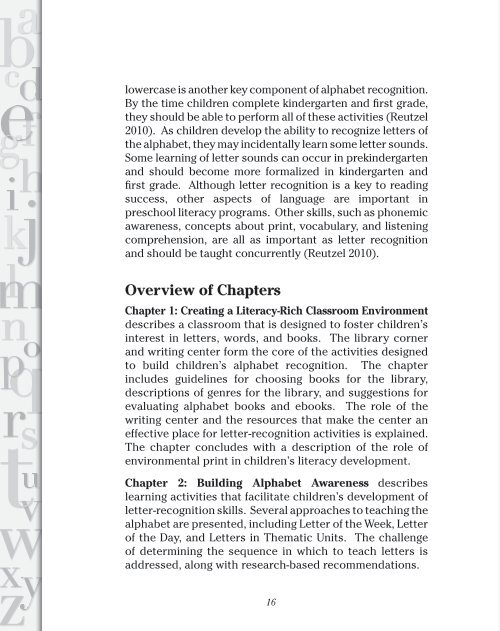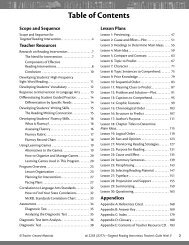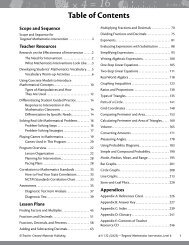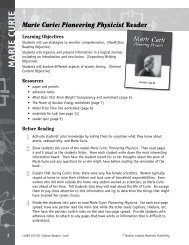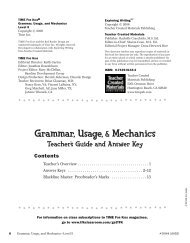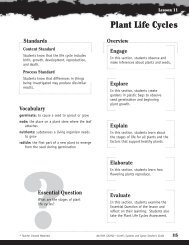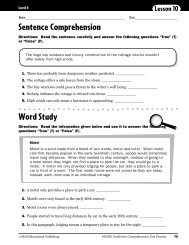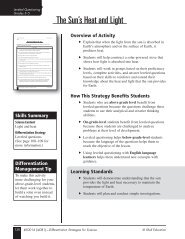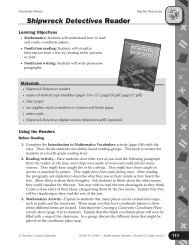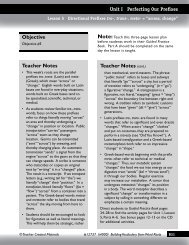Author Lesley Mandel Morrow Foreword by Ruth A. Yopp - Teacher ...
Author Lesley Mandel Morrow Foreword by Ruth A. Yopp - Teacher ...
Author Lesley Mandel Morrow Foreword by Ruth A. Yopp - Teacher ...
You also want an ePaper? Increase the reach of your titles
YUMPU automatically turns print PDFs into web optimized ePapers that Google loves.
lowercase is another key component of alphabet recognition.<br />
By the time children complete kindergarten and first grade,<br />
they should be able to perform all of these activities (Reutzel<br />
2010). As children develop the ability to recognize letters of<br />
the alphabet, they may incidentally learn some letter sounds.<br />
Some learning of letter sounds can occur in prekindergarten<br />
and should become more formalized in kindergarten and<br />
first grade. Although letter recognition is a key to reading<br />
success, other aspects of language are important in<br />
preschool literacy programs. Other skills, such as phonemic<br />
awareness, concepts about print, vocabulary, and listening<br />
comprehension, are all as important as letter recognition<br />
and should be taught concurrently (Reutzel 2010).<br />
Overview of Chapters<br />
Chapter 1: Creating a Literacy-Rich Classroom Environment<br />
describes a classroom that is designed to foster children’s<br />
interest in letters, words, and books. The library corner<br />
and writing center form the core of the activities designed<br />
to build children’s alphabet recognition. The chapter<br />
includes guidelines for choosing books for the library,<br />
descriptions of genres for the library, and suggestions for<br />
evaluating alphabet books and ebooks. The role of the<br />
writing center and the resources that make the center an<br />
effective place for letter-recognition activities is explained.<br />
The chapter concludes with a description of the role of<br />
environmental print in children’s literacy development.<br />
Chapter 2: Building Alphabet Awareness describes<br />
learning activities that facilitate children’s development of<br />
letter‐recognition skills. Several approaches to teaching the<br />
alphabet are presented, including Letter of the Week, Letter<br />
of the Day, and Letters in Thematic Units. The challenge<br />
of determining the sequence in which to teach letters is<br />
addressed, along with research-based recommendations.<br />
16


